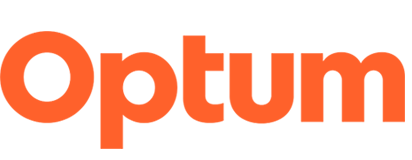Using technology to strengthen health care's front door
Digital tools are helping organizations achieve scale quickly in the face of the pandemic.
Mouli Venkatesan | May 19, 2020
A triage reboot
Grouping patients by severity of symptoms — also known as triaging — is not a new concept. Its early uses can be traced back to the late 1700s.
Since its beginnings in battlefield medicine, triaging has become a key component of modern-day health care. It’s an especially useful tool for emergency departments, where managing resources, cost and patient flow is critical to success.
Emergency department triage systems are equipped to handle everyday patient volumes and even mass casualty events. Yet, at times, hospitals still struggle with overcrowded waiting rooms and care delays.
To alleviate the strain on emergency departments, traditional triage systems have evolved to include telehealth tools like nurse lines and symptom checkers. These tools serve as a digital “front door” and guide people to the right level of care.
Despite recent advances, both traditional and telehealth-based triage methods have been challenged by COVID-19, the disease caused by the SARS-CoV-2 virus.
As the health system navigates social distancing, large-scale infection prevention and space-planning for critical illness, it’s time to take another look at our approach to the triage process.
Scaling up to meet digital triage needs: Lessons learned
Telehealth and digital health technologies associated with this area of care, like remote patient monitoring, aren’t new. But adoption of these tools has been slow. A 2019 study suggested only one in 10 consumers had ever utilized a virtual visit. Barriers to adoption have included lack of consumer trust and awareness, coverage by health insurers and investment by providers.
The risks of exposure to COVID-19 for both front-line workers and patients drove an unexpected spike in demand for existing virtual care tools and technologies. For example, Cleveland Clinic reported that outpatient telehealth visits, which previously made up less than 2% of their outpatient care, had increased to over 75%.
However, scaling telehealth solutions quickly to meet the needs of providers, health plans, employers and consumers was not a simple task.
There are several learnings we can take away from fast-tracking telehealth technology projects to connect teams and deliver expanded consumer care capacity. Optum care and technology team experiences offer some lessons and potential approaches to consider for future planning.
Addressing limits
COVID-19 dramatically increased consumer call volume to Optum NurseLine and other inbound clinical support services. As a result, individuals calling in initially experienced longer than normal hold times and unfortunately abandoned calls at a higher rate. With overall service levels dropping, Optum teams took immediate action to adapt to an unprecedented spike in demand.
Service performance was really a symptom of increased need for virtual care. Optum technology teams immediately diagnosed the surge and looked for alternatives.
To prevent extra stress on health systems and avoid further spread of COVID-19, accurate symptom checkers needed to become robust digital triage systems. Digital health company and Optum Ventures partner Buoy Health used Centers for Disease Control and Prevention guidance to enhance their digital risk-assessment triage tool so that it could recognize symptoms of COVID-19.
Optum deployed the tool — called Buoy COVID-19 Digital Symptom Tracker — to various web portals, making it available to millions of UnitedHealthcare health plan members, along with UnitedHealth Group employees and Optum care providers.
Connecting the tracking tool expanded NurseLine capabilities by offering an intervention with information to inform their next best action for care. Individuals who used Buoy COVID-19 Digital Symptom Tracker and learned they were at higher risk for COVID-19 were triaged to NurseLine for a live discussion and guidance on next steps.
Introducing the self-service symptom checker — accessible through any connected device — added a new layer to the triage process and lessened the burden on the NurseLine call centers.
Prioritizing human intervention alongside technology
While technology such as a symptom checker can provide some relief to spikes in call center demand, the role of human intervention is still critical in the digital triage process.
Opening up capacity on NurseLine has allowed Optum to redeploy nurses for providing targeted support to handle the higher-than-normal volume of calls overwhelming other consumer call centers, including reducing the strain on first responders. For example, hundreds of Optum nurses have been prepared and leveraged to triage non-emergent 911 calls.
Need for triaging emerges in clinic care management
Flattening the COVID-19 curve — and preventing another spike — goes beyond one-time symptom tracking or a call to the NurseLine. It requires large-scale screening, monitoring and ongoing care, all done from a distance.
Digital health company Vivify Health has deployed unique COVID-19 continual screening and monitoring pathways within its remote patient monitoring platform. Vivify currently serves customers representing over 800 facilities across the United States, including Optum care provider facilities. Participating patients at these facilities have access to the Buoy symptom screener, then are either given instruction to manage their symptoms at home or triaged to NurseLine.
In some cases—such as at the Everett Clinic, an Optum facility in the greater Seattle area—patients can schedule a virtual visit with their provider. Further, for those who test positive for COVID-19, the Vivify app automatically transitions into a full remote monitoring tool, including virtual visits to manage care at home and communicate with their provider throughout the process.
Beyond COVID-19: A bright future for digital triaging
Telehealth’s role in enabling patient triage from a distance has taken center stage during the COVID-19 pandemic. These digital solutions — made even more accessible through loosened regulations and expanded coverage for telehealth reimbursement — could prove valuable beyond the pandemic.
Technology for digital triage is primed to solve access and care management problems that have long plagued emergency departments and physician offices across the U.S.
That’s because digital triage tools help guide people to the most appropriate level of care, eliminating unnecessary appointments, managing utilization of expensive care options and keeping others safe from infection.
Regardless of preference — from very little contact through a symptom tracker, to a more personal connection via a virtual visit — there’s a solution for everyone. Enabling self-management of symptoms while staying connected with a care team from home creates a large opportunity for reducing costs, improving health outcomes and improving the experience for consumers and health care organizations alike.
With the help of existing technologies, the COVID-19 pandemic has catalyzed the trend toward greater adoption of scaled-up capabilities in the field of digital health. The centuries-old triage system has been reinvented for a digital age, and this triage reboot might just be here to stay.
Additional stories around the industry response to COVID-19 and our efforts to confront current challenges can be found on Optum Community Circle. You can also find more perspectives on enabling health care innovation on our data, analytics and technology blog.

Mouli Venkatesan
Senior Vice President and Chief Information Officer
Optum Enterprise Clinical Technology
Mouli Venkatesan is senior vice president and chief information officer of Optum Enterprise Clinical Technology. Venkatesan is responsible for clinical technology strategy and delivery across the enterprise. He also leads the enterprise agenda for interoperability and closely partners with UnitedHealthcare and Optum business stakeholders and external regulators to advance the interoperability agenda for the enterprise.
He holds his undergraduate degree in electronic engineering from Indiana University and his MBA in health care from the University of St. Thomas.
Sign up for updates
Receive fresh perspectives and expert advice on data, analytics and tech innovation in health care.
